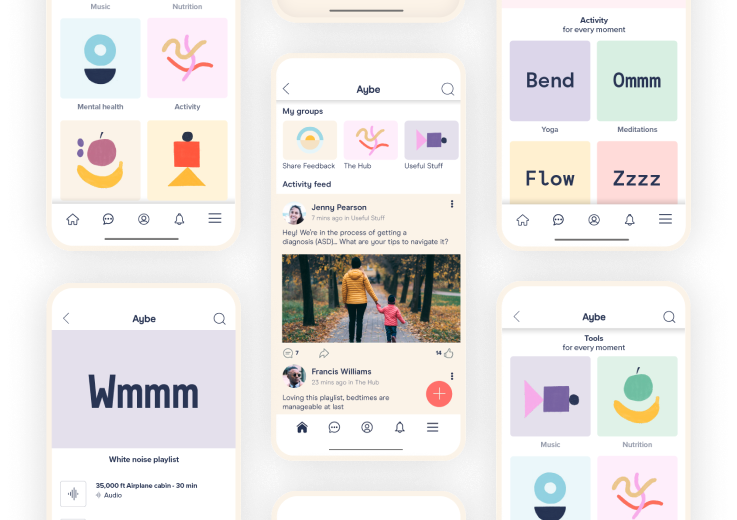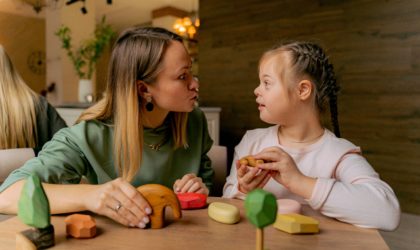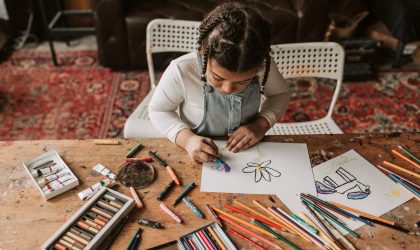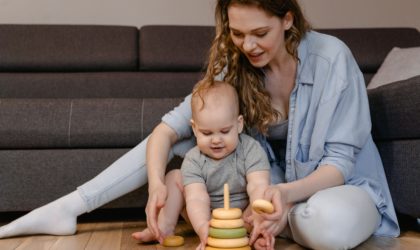4 Brilliant Play Ideas that Build Confidence and Foster Creativity
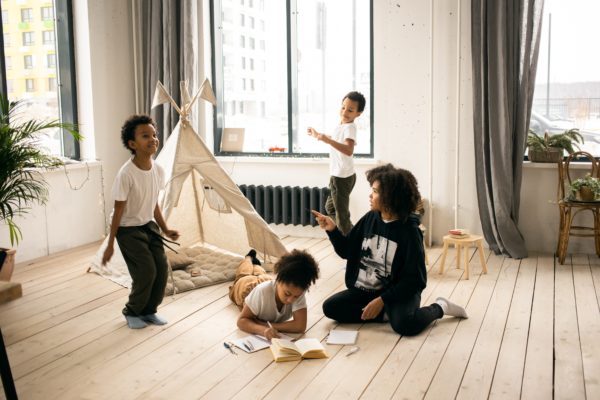
“What if you could talk to the animals at the zoo?”
“What if we got to change the colours of the trees outside whenever we wanted?”
The phrase “what if…” is such a fantastic way to start a conversation with any child. From the logical to the starry-eyed wanderer, open-ended questions can lead to interesting conversations with a little something for everyone.
It allows children to use their imaginations without any fear of being corrected. It usually leads to a few giggles, too, since they can often take you in a direction you may never have considered. We see the magic of the freedom to explore and create without expectation in these fun conversations.
Offering the same space to explore freely without a defined process or goal during playtime is just as important. That’s why open-ended play is a powerful way to help kids stretch, create, and learn, while having fun doing what they want.
Join the Community
Download the app to access more specialist advice, community support and wellbeing tools.
Join today as a Contributor member to gain free* access!
Download now
*Free access, in return for contributing to Aybe on a weekly basis, for example by commenting, liking, responding to feedback requests. See Terms & Conditions.
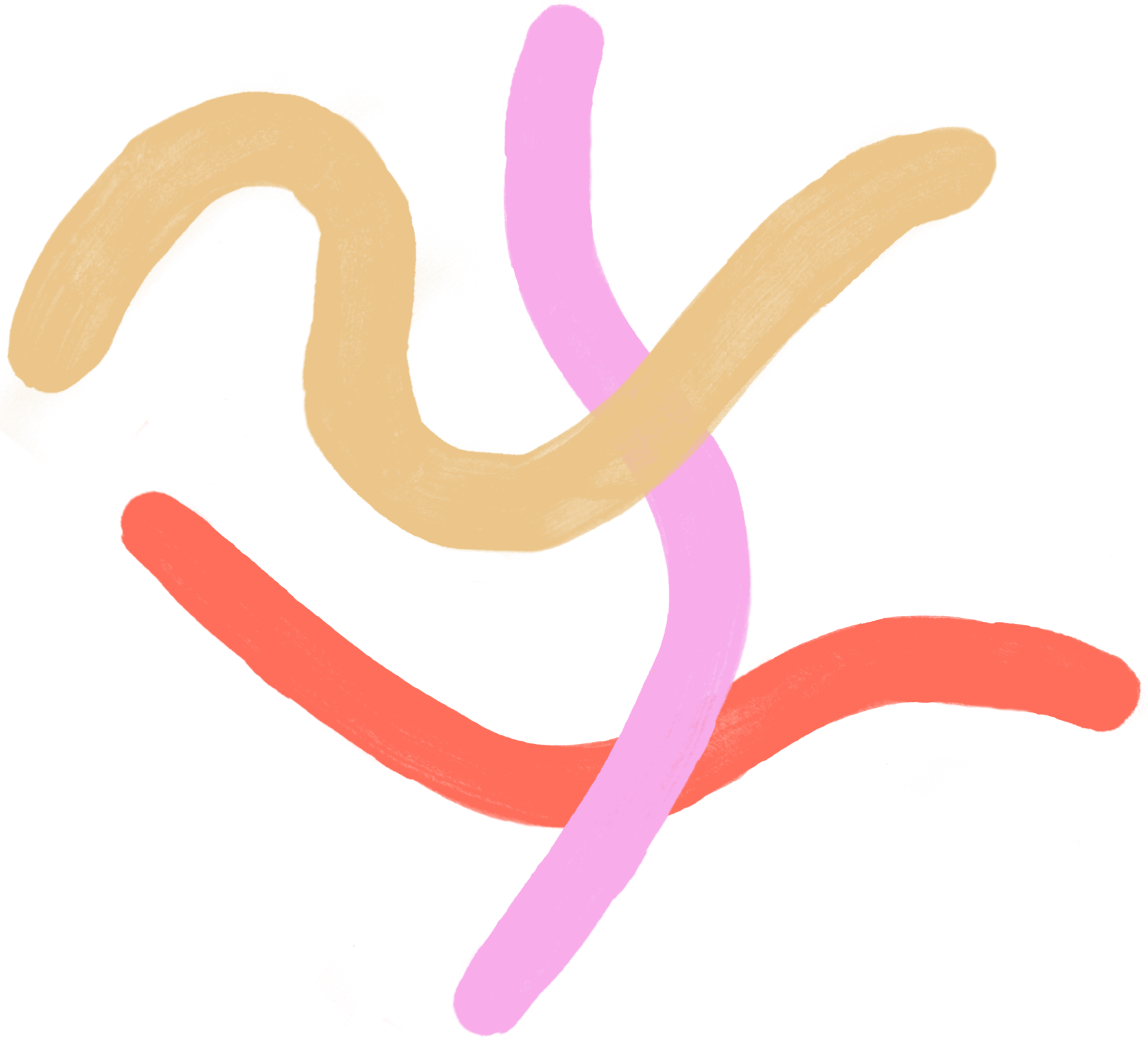
What is Open-Ended Play?
Open-ended play is a way to let children lead the way when playtime comes around. The great part about it is that there are no specifics, no rules, nothing new to learn, little to no structure, just an open-ended and imagination-led journey.
There is no right or wrong way to play, no expectations, and no judgements. The possibilities are endless and it gives children a safe opportunity to make choices on their own without instructions from an adult.
How Does Open-Ended Play Help ND Kids?
Open-ended play is particularly advantageous to ND kids for multiple reasons. It promotes creativity, as some studies have shown ADHDers identified as more creative than many other kids. And without constraints, their creativity is able to be tested, changed, and tested again, allowing curiosity and exploration to drive the process.
They’re able to learn at their own pace, move and express themselves, dive into their own thoughts, and build life skills in ways not typically available in a classroom or structured setting.
For Autistic children, open-ended play can be a useful tool for helping explore their imagination. The freedom to organise things in their own way and manipulate different toys can build confidence. Also, the chance to experience different types of toys allows them to be creative and practice with a toy’s functionality while being in control of how it happens.
Language skills, social skills, and risk-taking all get a chance to develop. Open-ended play lets children make instinctual adjustments as they go, using what’s around them to fit their strengths and their needs.
So much of the everyday world has defined processes, specific timelines, and pre-determined goals. That can be a lot for anyone, but navigating those parts of the day with neurodivergence can feel even more demanding. Open-ended play removes that layer of outside expectations, which can be less stressful and more fun.
4 Bright Ideas to Facilitate Open-Ended Play for Autistic Kids
Open-ended play doesn’t require a lot of direction in the moment, but it does take some preparation in setting the scene. Find a space where things are open, safe, and it’s ok if there’s a bit of clutter and a mess while they’re playing. If it’s possible, find the lighting and background noise that’s best for your crew.
Then it’s time to set up our open-ended play space with toys and materials. You will want variety, flexibility, and the opportunity for exploration. Here are a few categories of open-ended toys and items:
1. Building Materials
- Legos and Duplos
- Wood blocks
- Magnet tiles
- Blankets, pillow, and cushions
2. Make Believe Materials
- Household materials (toys or even real items, if they’re safe)
- Costumes from real-life roles or fictional stories
- Puppets and figurines
- Stations or surfaces like a play kitchen or a “stage”
3. Manipulatives and Sensory Materials
- Fidget toys
- Sensory objects
- Playdoh, water, or sand
- Motor activities from balls to things that can be assembled and disassembled
4. Creative Materials
- Paper and drawing or painting materials
- Scraps of fun textiles or other materials
- Age-appropriate construction materials like glue, tape, or scissors
- A chalkboard or whiteboard
You can find things around the home or classroom, at almost any store, or online like these helpful ND-focused open-ended toys. Give kids a mix of solo, partner, and group play, if it’s appropriate. That can include the adults sometimes! Just remember to make it collaborative and take their lead. It’s usually more fun that way, anyway.
Open-Ended Play Supports Kids’ Mental Health, Language Skills, Bonding and Creativity
Many of these can support other co-occurring conditions, as well. Certain comforting objects or spaces may help someone with anxiety find some calm. Hands-on manipulatives can allow a child with dyslexia to explore words and letters in a new way. Active play can support a healthier sleep routine.
Open-ended play is great for tactile and creative learners who want a hands-on experience. It can give them a chance to recreate and make connections from settings in the real world or create something completely their own. They are able to practice conversations and social situations, explore their likes and dislikes, test ideas, and bounce ideas off of other people playing with them.
It gives Neurodivergent kids variety and creativity while learning important life skills in a comfortable environment.
Did you know that play enhances socio-communication development in ND kids? What are some tools you have found helpful with your kids? Anything you want us to add to our repertoire? Let us know!
Join the Community
Download the app to access more specialist advice, community support and wellbeing tools.
Join today as a Contributor member to gain free* access!
Download now
*Free access, in return for contributing to Aybe on a weekly basis, for example by commenting, liking, responding to feedback requests. See Terms & Conditions.

